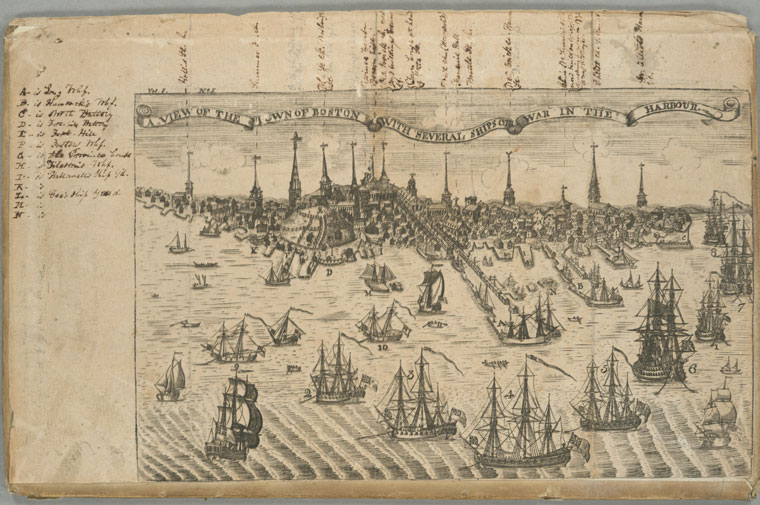“Phebe Oliphant (a Black woman)”
At the Eleven Names Project, Wayne William Tucker shared a long essay about the preferred names of the black woman who helped to raise Abigail Adams and was part of her household later in life.
As Abigail grew up and married, that woman was enslaved to her father, the Rev. William Smith, probably coming from the family of her mother, formerly Elizabeth Quincy. The Quincy and Smith families referred to her by her first name only: Phoebe.
After becoming free in 1783, Phoebe married a man whom Abigail referred to as “Mr. Abdee.” Seeking to treat her in the same way as white women, the Adams Papers editors therefore referred to her as Phoebe Abdee.
Following that lead, I’ve tagged her under the name Phoebe Abdee. So did Woody Holton in one of the few articles written about her.
Tucker has found a more complex story in local records, however, indicating that Phoebe did adopt her husbands’ surnames—but Abdee wasn’t one of them.
First, Tucker brings up the possibility that Phoebe married and had children while enslaved to the Smiths, based on mentions of other people in the accounts settling the minister’s estate in 1784. That’s just a possibility, though.
In 1777, the Rev. Mr. Smith read out an intention to marry for his “Phebe” and “Brester Sternzey of Boston.” There’s no confirmation this union went through. (Boston’s town records don’t mention this intention. They state that the Rev. Joseph Eckley married Bristol Stenser and Deborah Foster on 16 Dec 1784.)
In 1784, Phoebe married a man Abigail Adams identified as “Mr. Abdee whom you know.” His name appears in town records as Abdi and Abda, elsewhere as Abdy. Tucker connects this man to “Abde Deacon Savil’s negro man,” who had married a woman enslaved to a Braintree minister back in 1754. It appears that Abdee (however spelled) was his given name, and that after emancipation (if not before) he used Savil as his surname. This man died in the first week of 1798, according to Abigail’s sister Mary Cranch.
On 19 Sept 1799, Quincy vital records show a woman named Phebe Savil marrying William Olifant. A month later, John Adams mentioned that Phoebe had remarried. In 1800, Abigail referred to Phoebe’s husband as William for the first time.
Finally, on 7 Oct 1812, weeks after Abigail referred to Phoebe as “sick and dying,” the Quincy records state that “Phebe Oliphant (a Black woman”) died at age eighty-three.
As Tucker says, the coincidences of the dates strongly suggest that the Adamses were referring to Phebe Savil/Oliphant, the woman Abigail had known all her life, without using her surnames.
Thus, it appears that “Phoebe Abdee” went by:
As Abigail grew up and married, that woman was enslaved to her father, the Rev. William Smith, probably coming from the family of her mother, formerly Elizabeth Quincy. The Quincy and Smith families referred to her by her first name only: Phoebe.
After becoming free in 1783, Phoebe married a man whom Abigail referred to as “Mr. Abdee.” Seeking to treat her in the same way as white women, the Adams Papers editors therefore referred to her as Phoebe Abdee.
Following that lead, I’ve tagged her under the name Phoebe Abdee. So did Woody Holton in one of the few articles written about her.
Tucker has found a more complex story in local records, however, indicating that Phoebe did adopt her husbands’ surnames—but Abdee wasn’t one of them.
First, Tucker brings up the possibility that Phoebe married and had children while enslaved to the Smiths, based on mentions of other people in the accounts settling the minister’s estate in 1784. That’s just a possibility, though.
In 1777, the Rev. Mr. Smith read out an intention to marry for his “Phebe” and “Brester Sternzey of Boston.” There’s no confirmation this union went through. (Boston’s town records don’t mention this intention. They state that the Rev. Joseph Eckley married Bristol Stenser and Deborah Foster on 16 Dec 1784.)
In 1784, Phoebe married a man Abigail Adams identified as “Mr. Abdee whom you know.” His name appears in town records as Abdi and Abda, elsewhere as Abdy. Tucker connects this man to “Abde Deacon Savil’s negro man,” who had married a woman enslaved to a Braintree minister back in 1754. It appears that Abdee (however spelled) was his given name, and that after emancipation (if not before) he used Savil as his surname. This man died in the first week of 1798, according to Abigail’s sister Mary Cranch.
On 19 Sept 1799, Quincy vital records show a woman named Phebe Savil marrying William Olifant. A month later, John Adams mentioned that Phoebe had remarried. In 1800, Abigail referred to Phoebe’s husband as William for the first time.
Finally, on 7 Oct 1812, weeks after Abigail referred to Phoebe as “sick and dying,” the Quincy records state that “Phebe Oliphant (a Black woman”) died at age eighty-three.
As Tucker says, the coincidences of the dates strongly suggest that the Adamses were referring to Phebe Savil/Oliphant, the woman Abigail had known all her life, without using her surnames.
Thus, it appears that “Phoebe Abdee” went by:
- Phebe as an enslaved woman, not by choice—her choice of surname, if any, unknown.
- Phebe Savil from 1784 to 1799, after her husband Abdee.
- Phebe Oliphant from 1799 to 1812, after her husband William.


